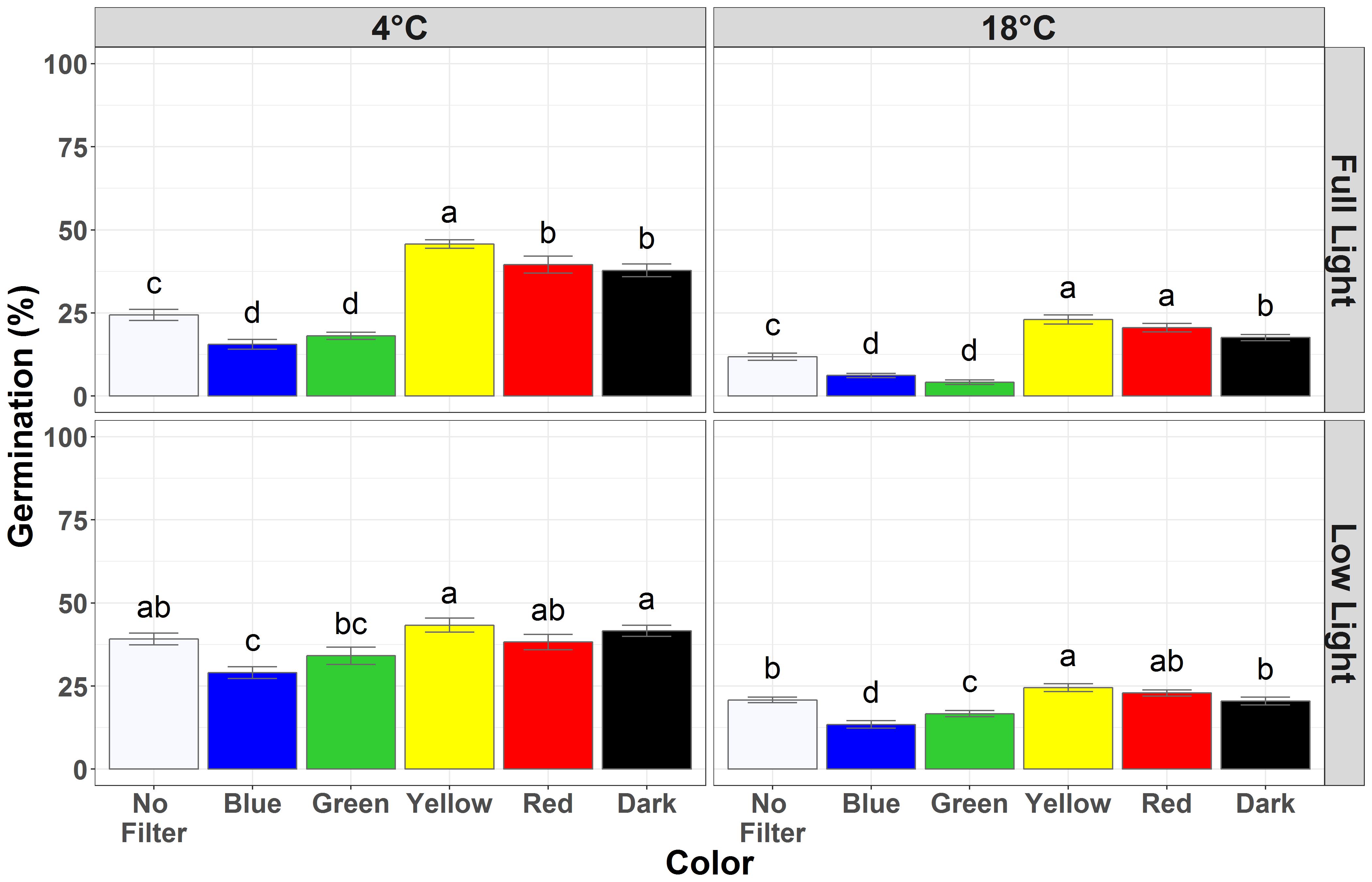Temperature and light effects on germination of Peronospora effusa sporangia

Abstract
Spinach downy mildew, caused by the biotrophic oomycete Peronospora effusa, is an economically important disease that is found in all spinach growing regions of the US. To effectively predict disease risk we need to understand the response of P. effusa to different environmental conditions. We conducted several germination assays, exposing P. effusa sporangia to different temperature and lighting conditions. Between 5 and 25C under constant darkness, germination of P. effusa sporangia on water agar declined. These results were qualitatively different from a previous study of P. effusa germination that found a bimodal response curve, with increased germination at lower and higher temperatures. Time course studies revealed that sporangia consistently germinated within the first twelve hours of plating, regardless of incubation temperature. Sporangia exposed to blue light had significantly reduced germination when compared with those exposed to red, yellow, or no light. Light intensity and color significantly impacted germination, although the effect of color varied by light intensity.